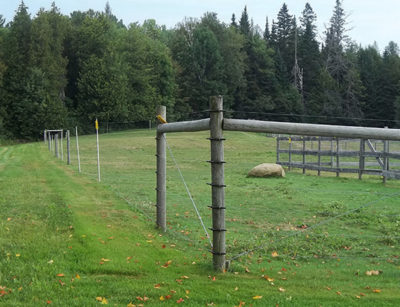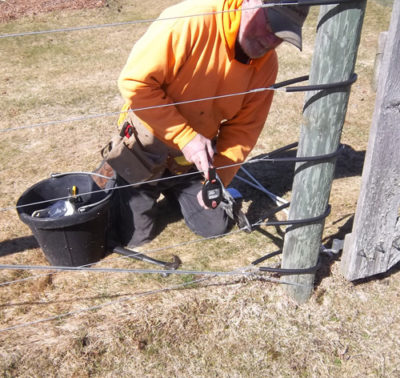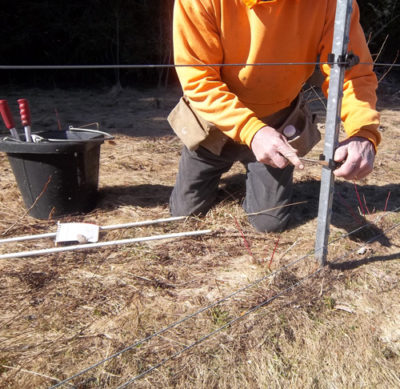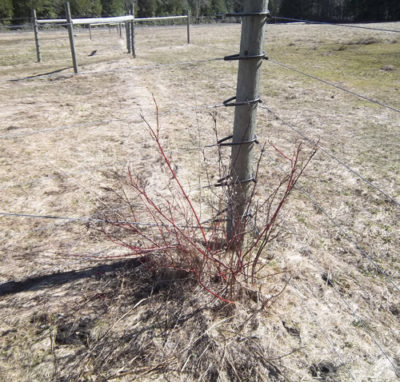 Actually, it’s always time for fence maintenance, but our cold winters and deep frost wreak havoc on fences. Spring is the best time to walk your fence lines, before the grass starts to grow so you can clearly see what needs to be done.
Actually, it’s always time for fence maintenance, but our cold winters and deep frost wreak havoc on fences. Spring is the best time to walk your fence lines, before the grass starts to grow so you can clearly see what needs to be done.
We use mainly 7-strand, high tensile fence here, which is a typical type of livestock fence. Wood posts and braces are placed at corners and gates and single posts are placed at wide intervals along the fence. In between, metal t-posts support the wires. There are strainers on the wires for tensioning.
Fence posts can heave during winter and cause wires to loosen in places and tighten in others. The rachet-like strainers can easily be adjusted to correct this.
The metal t-posts use insulators to hold the wires. The plastic insulators often break during the winter as the snow pushes and pulls at them. You’ll want to have extra insulators on hand to replace the broken ones.
If you have a lot of fencing, you probably find it difficult to keep up with grass and weeds along your fence line. Spring is a good time to cut back whatever grew up last year. You don’t want grass and weeds draining the charge from your fence.
If you’re fence runs through or near trees, you’ll want to remove any downed trees or branches from on and around the fence. While you’re at it, look up and see if you should be pruning back any branches that could come down on your fence.
You might come across more serious damage that requires splicing broken wires or replacing fence posts. These are beyond the scope of simple spring maintenance tasks and will require more skill, tools and materials. But these are few and far between. A well-installed high tensile fence can take quite a bit of punishment and last for many years.




